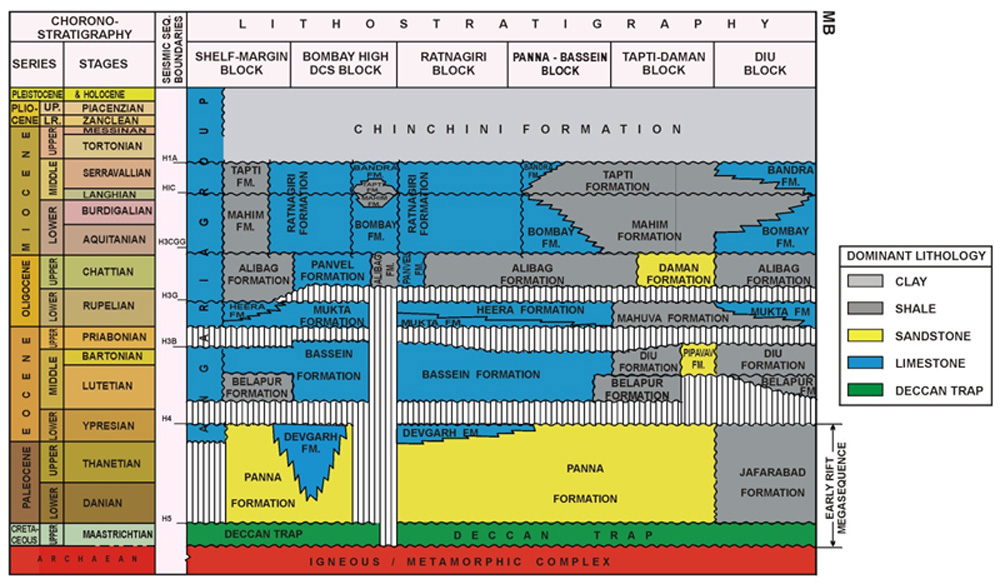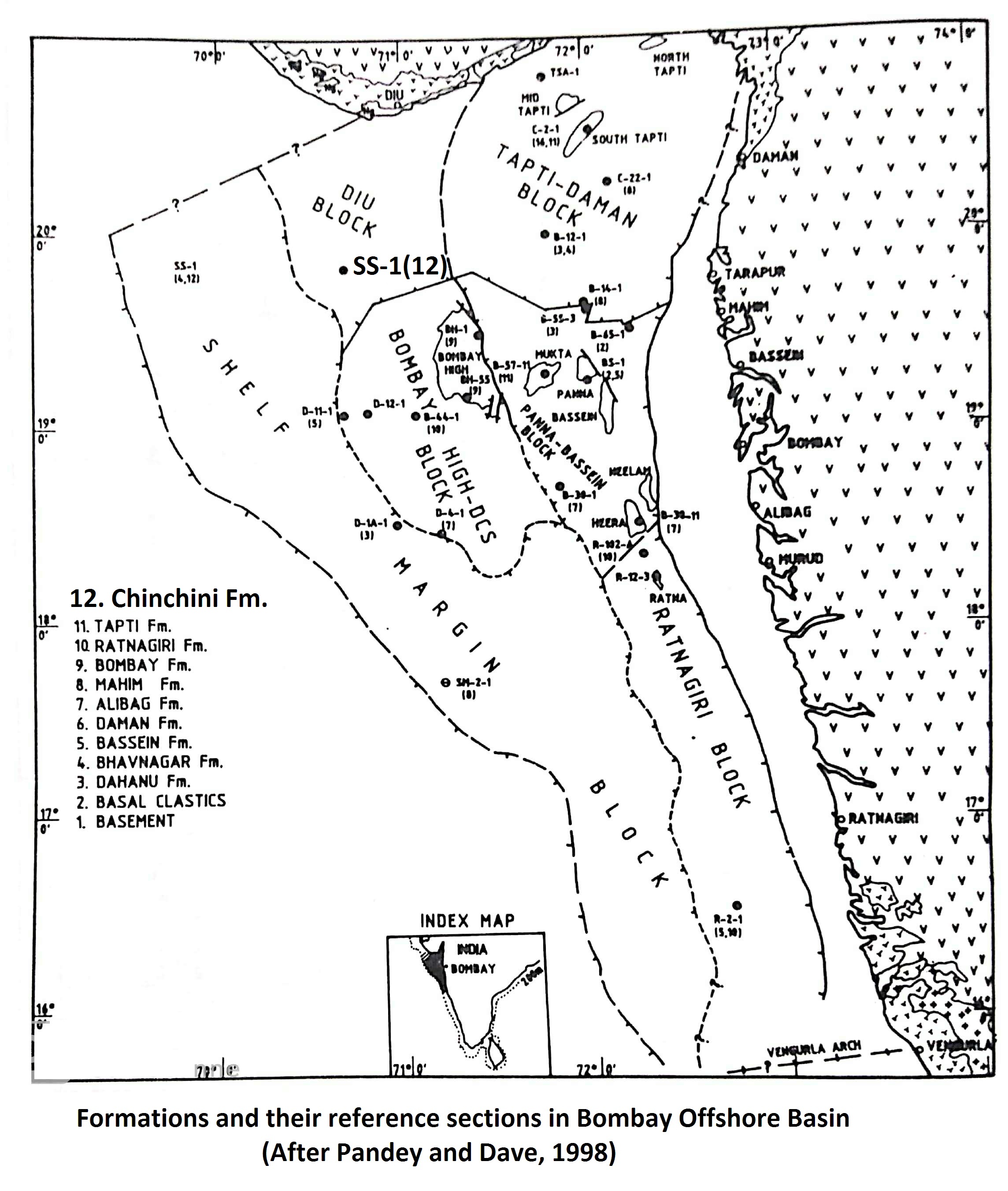Mahim Fm
Type Locality and Naming
Well Tarapur – 1, (depth interval 1459 – 1682 m). [Original Publication: Basu, D.N., Banerjee, A and Tamhane, D.M. 1982. Facies distribution and petroleum geology of Bombay Offshore Basin, India. Journal Petroleum Geology, Volume 5, pp. 57-75.]. The dominantly shale sequence with subordinate limestone, occurring between depth 1459 to 1682 m of well Tarapur-1, was designated as the Mahim Formation by Basu et al., 1982. Reference well: Well C-22-1 (depth interval 1600 -2118 m); Well SM-2-1 (depth interval 2606-3256 m)
[Figure: Lithostratigraphy in Mumbai Offshore blocks (from NDRDGH.gov.in; after Jitendra Misra, 2009)]
Lithology and Thickness
Claystone. In the type well, the lower part of the formation consists of dominantly shale facies with subordinate limestone. Its upper part consists of shale with a few thin siltstone bands. The shales are light to dark grey, calcareous, fissile, well laminated and fossiliferous. The limestones are white to dirty white, soft to moderately hard and compact.
In the type section, the formation is 494m thick and in reference well C-22-1, this formation is 518 m thick.
[Figure 1: Formations and their reference sections in Mumbai Offshore Basin (after Pandey and Dave, 1998)]
Relationships and Distribution
Lower contact
In the type well, the Mahim Formation is unconformably underlain by the Alibag Fm, whereas, in the reference well C-22-1, it is underlain by the sandy facies of the Daman Fm. Over Diu block, eastern part of Bombay High-DCS block, most of Panna-Bassein block, the formation shows a gradational contact with the underlying Bombay Fm. West of the Paleogene hinge, it is underlain by the Alibag Fm. Presence of thin limestone bands in the Mahim Formation differentiates it from the lime green shales of the Alibag Fm in this area. In the shelf-slope transition zone, the Mahim Formation shows an intertonguing relationship with the adjoining Ratnagiri Fm.
Upper contact
The upper contact of the Mahim Formation is defined at the bottom of a regional siltstone marker bed by Mathur et al. (1983). Tapti Fm overlies it.
Regional extent
GeoJSON
Fossils
In the type section, the top of Mahim Formaion extends about 24 m above the top of Miolepidocyclina excentrica and Ammonia papillosus biozone (Pandey and Guha, 1979).
Age
Depositional setting
The dominantly finer clastic facies of this formation were deposited as prodelta muds.
Additional Information

